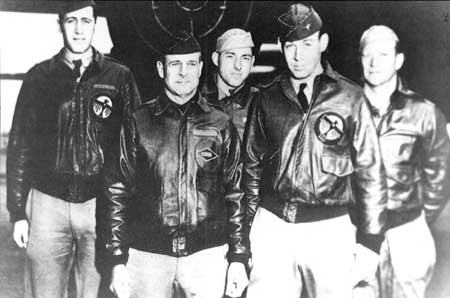| War in the Pacific: The First Year |
A Guide to
the War in the Pacific |
|
|
War in the Pacific: The First Year Glorious Month of June: Midway and the Aleutians On April 18, 1942, under the command of Lieutenant Colonel James Doolittle, B-25 Mitchell bombers were launched from the aircraft carrier USS Hornet, and successfully bombed Tokyo. Japanese military leaders had no idea the bombers had been launched from a carrier (a revolutionary concept at the time). Strategists thought the attack must have originated from American bases on Midway or in the Aleutian Islands. When asked from where the bombers had originated, Roosevelt jokingly replied "Shangri-la," the fictional, hidden paradise in James Hilton's novel, Lost Horizon. The attack itself caused little damage, but boosted American morale, and perhaps more importantly, led the Japanese to revise their strategy. Japanese Admiral Yamamoto Isoroku, who believed that a prolonged struggle with the United States could only lead to a Japanese defeat, was convinced that the Japanese must lure the remaining American fleet, especially the aircraft carriers, into a decisive battle. Yamamoto proposed a two-pronged operation against Midway, the main objective, and a diversionary attack to Alaska's Aleutian islands. The Japanese proposed to invade key islands in the Aleutians to secure their northern flank, and to provide a possible route for the invasion of North America.
The diversion in the Aleutians did not fool the Americans, who had broken the Japanese naval code and knew of the enemy's true intentions. The Battle of Midway, between June 3-6, 1942, was the result. Admiral Nagumo Chuichi dispatched his carrier-based bombers to attack the island of Midway, and then discovered there was an American task force, including three aircraft carriers commanded by Rear Admirals Frank J. Fletcher and Raymond A. Spruance, near his fleet. When the Americans launched their torpedo bombers against the Japanese, they were virtually destroyed by Japanese fighters and anti-aircraft fire. Ensign George Gay was the only survivor of the doomed Torpedo Squadron 8. No Japanese ships were touched. The Japanese, however, failed to detect U.S. dive-bombers flying overhead, which in a matter of minutes determined the outcome of the battle and influenced the course of the war in the Pacific. The Battle of Midway resulted in the loss of four Japanese carriers: Akagi, Kaga, Soryu, and Hiryu. The carrier USS Yorktown was the only loss for the Allied cause. With the major defeat at Midway, the Japanese decided to continue the Aleutians operation in the hopes of gaining some victory. Following the air raids on the American base at Dutch Harbor, towards the eastern end of the Aleutian chain, 2,500 Imperial troops invaded the islands of Attu and Kiska on the morning of June 7, 1942. They captured ten U.S. sailors who manned the weather station on Kiska, as well as forty native Aleuts and a Bureau of Indian Affairs teacher on Attu. Attu and Kiska, along with Guam in the Mariana Islands, Wake Island in the central Pacific, and the Philippine Islands, were the only American territories occupied by enemy forces during the Second World War.
|

